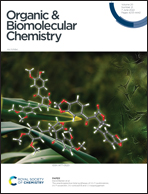Chirality-driven self-assembly: application toward renewable/exchangeable resin-immobilized catalysts†
Abstract
Resin-immobilized catalysts were prepared through chirality-driven self-assembly. The method allows the resin-immobilized catalyst to be regenerated under mild conditions and in situ catalyst exchange to be carried out quantitatively. The uniqueness of the methodology was demonstrated by the preparation of a catalyst for TEMPO oxidation as well as a two-step sequential TEMPO oxidation/aldol condensation sequence enabled by facile catalyst exchange.



 Please wait while we load your content...
Please wait while we load your content...